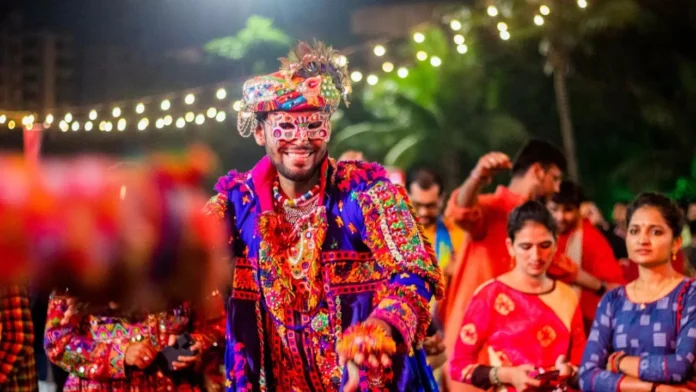The vibrant and energetic folk dance of Dandiya, often associated with Gujarat, has transcended its regional origins to become a cultural phenomenon across India and even internationally. Typically performed during the festival of Navratri, this colorful dance form holds deep historical and spiritual significance. But how did this unique and lively tradition start in Gujarat?

Ancient Roots and Mythological Significance
The origins of Dandiya can be traced back to ancient times, with roots deeply embedded in Hindu mythology. It is believed that the dance form symbolizes the reenactment of the battle between the goddess Durga and the demon Mahishasura. The rhythmic clashing of sticks (known as dandiyas) during the dance is said to represent Durga’s sword and her triumph over evil, a central theme of Navratri celebrations.

Historically, Dandiya was performed as a devotional Garba dance in honor of Goddess Durga. Over time, the dance evolved from being a part of religious rituals to becoming a community-based folk dance, especially during the nine nights of Navratri. In ancient times, the performance was an expression of devotion, celebrated in rural Gujarat where communities came together to mark the spiritual occasion.
Traditional Elements of Dandiya
Traditional Dandiya Raas is performed in concentric circles, with dancers moving rhythmically to the beats of live music, typically played on traditional instruments like the dhol, tabla, and harmonium. The use of two decorated sticks represents the sword fight between Durga and Mahishasura. While the men traditionally wore kedia (a flared jacket) and dhoti, and women donned colorful chaniya cholis, modern iterations of the dance have embraced a wider variety of attires and musical accompaniments.
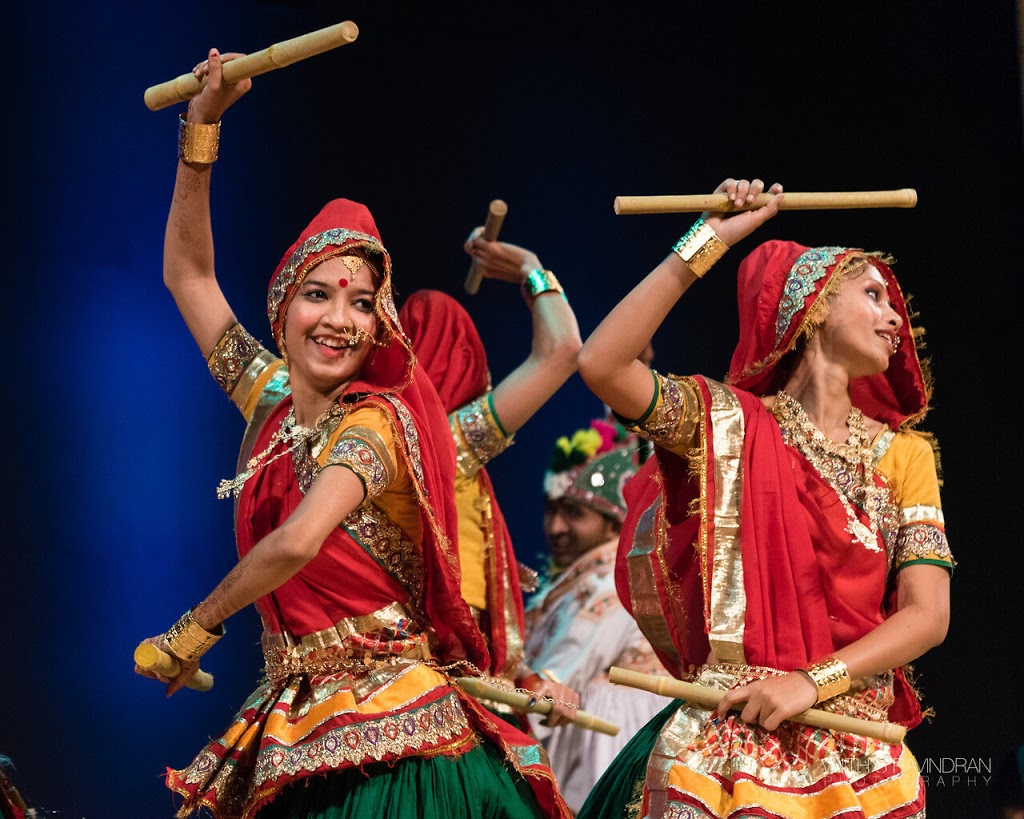
The steps in Dandiya Raas are simple, with participants exchanging places with their partners while clashing sticks in time with the rhythm. Over time, this has transformed into more complex and visually spectacular formations, adding a festive spirit to the event. What started as a religious dance has now evolved into a social celebration, drawing together people from various backgrounds.
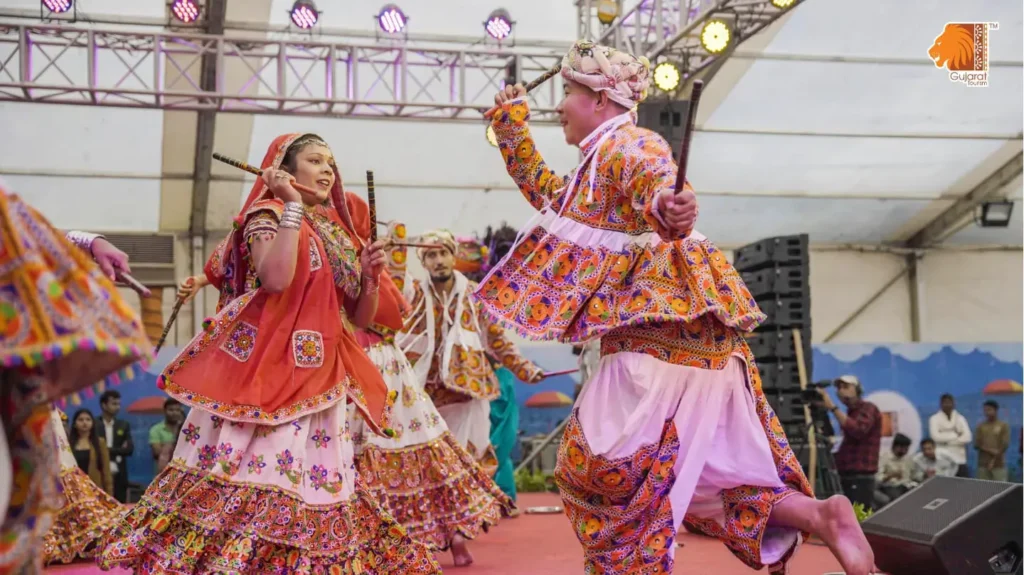
The Spread and Popularity of Dandiya
In Gujarat, Dandiya gradually became a dance not just for the devotees but for communities across caste and social divisions. The dance expanded beyond its religious context to become a joyous celebration of life, music, and culture. As Gujarat’s business and cultural influence grew in India and globally, so did the popularity of Dandiya.
With the rise of urbanization and Bollywood’s portrayal of Navratri and Dandiya, the dance form gained mass appeal beyond Gujarat. Bollywood films like Hum Dil De Chuke Sanam and Kai Po Che brought Dandiya to the silver screen, which further enhanced its appeal, especially among younger generations.
Today, Dandiya is not limited to Gujarat alone. It is celebrated in major cities like Mumbai, Delhi, and even internationally in countries with large Indian diasporas such as the United States, the UK, and Canada. Modern Dandiya events are often grand social gatherings with live bands, DJs, and extravagant costumes, turning the once humble folk dance into a global cultural celebration.
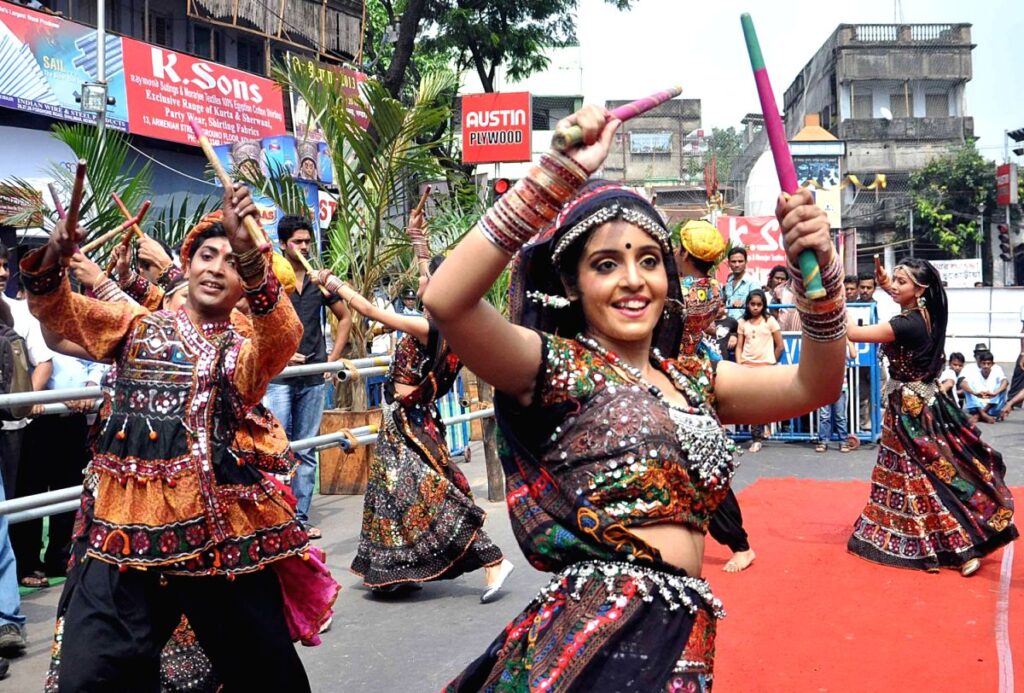
Modern-Day Dandiya: A Blend of Tradition and Modernity
In contemporary times, Dandiya Raas has evolved, blending traditional elements with modern influences. The folk dance has taken on various forms, such as Disco Dandiya, which incorporates electronic music and modern dance moves. Yet, at its heart, Dandiya remains a cultural symbol of devotion, community, and the victory of good over evil.
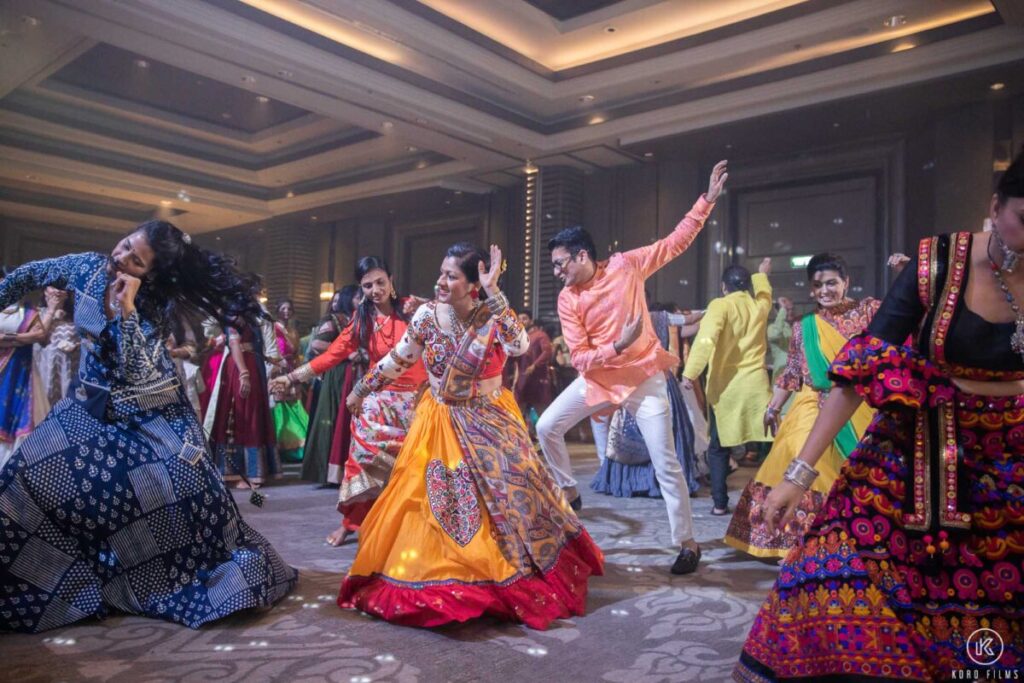
While traditional Dandiya Raas is still practiced in its purest form in the villages of Gujarat, urban centers have embraced a more commercial and elaborate version of the dance. Dandiya nights, especially during Navratri, are now complete with celebrity appearances, themed events, and competitions, yet the core essence of the dance—joy, celebration, and community—remains unchanged.

The culture of Dandiya in Gujarat is a fascinating blend of ancient mythology, religious significance, and communal harmony. What began as a devotional dance has evolved into a nationwide and even global phenomenon, bringing together people in celebration of life, music, and the victory of good over evil. As Dandiya continues to evolve, it stands as a powerful testament to Gujarat’s enduring cultural legacy and the unifying power of dance.



